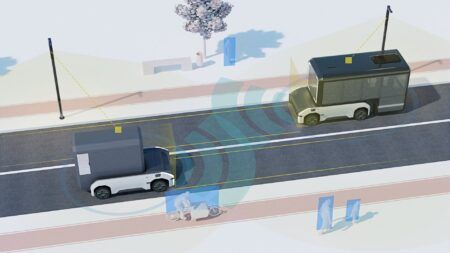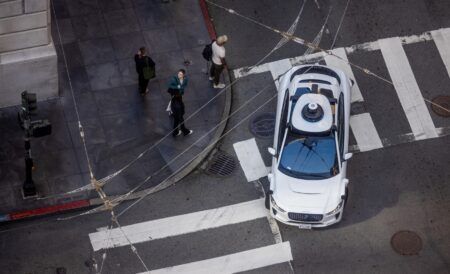The National Association of City Transportation Officials (NACTO) has released the Blueprint for Autonomous Urbanism, a first-of-its-kind street design vision to help cities worldwide prepare for the age of autonomous vehicles (AVs).
Building on NACTO’s library of peer-reviewed street design manuals for city transport, the Blueprint envisions a future where cities benefit from new transportation technologies to improve the public realm and build streets that work for people, rather than merely redesigning them to accommodate emerging technologies. Developed with a steering committee from NACTO’s 61 member cities and transit agencies, and funded by Bloomberg Philanthropies, the Blueprint outlines the physical and policy steps that cities could take to ensure that their streets can be redesigned to improve safety, prioritize people and public space, strengthen the role of mass transit, and manage the ‘contested curb’ as automated vehicles become commonplace.
The Blueprint outlines key tools and objectives for cities to use as they update their physical and digital infrastructure and on every type of street and intersection, from narrow, residential streets to major multi-modal boulevards.
The guide will help cities harness new technologies and repurpose street space no longer needed for driving lanes or parking. Future modules of the Blueprint will expand on these topics with new focus areas, including: roadway pricing, data partnerships with the private sector, regional planning, designing autonomous networks, and automated freight delivery.
The first module focuses on three concepts that cities are already dealing with:
Designing for Safety – planning streets that are primarily used as public spaces, with more convenient pedestrian crossings, and slower and more predictable vehicular movements, updating road rules to prioritize pedestrians and cyclists;
New Mobility Systems – ensuring fixed-route mass transit serves as the backbone of urban transportation, while an expanding range of fleet vehicles provides flexible first/last-mile connections;
Curbside Management – policies, street designs and pricing incentives to ensure that road space once reserved for parking is available for other uses, including transit, bike lanes, bike share stations, parklets, green infrastructure, freight deliveries, and passenger pick-up/drop-off zones.
“The expansion of autonomous vehicles is a once-in-a-lifetime opportunity to rethink city streets and save lives on an unprecedented scale, but only if cities are prepared,” said Janette Sadik-Khan, NACTO chair and principal at Bloomberg Associates.
“The Blueprint gives city leaders across the country, and around the world, the vision they need to partner with the private sector and design streets that are smarter, safer and more efficient than ever before.”




